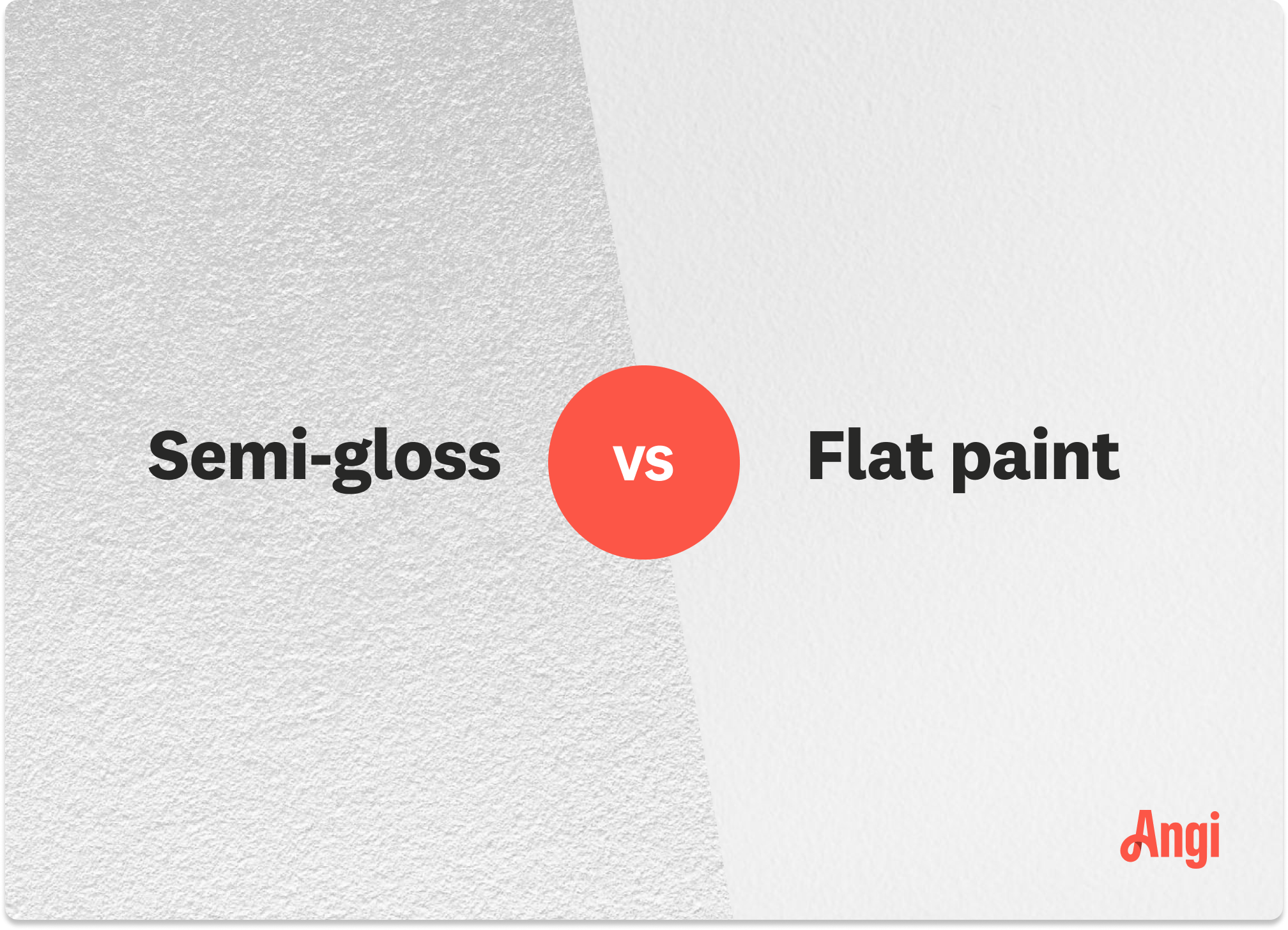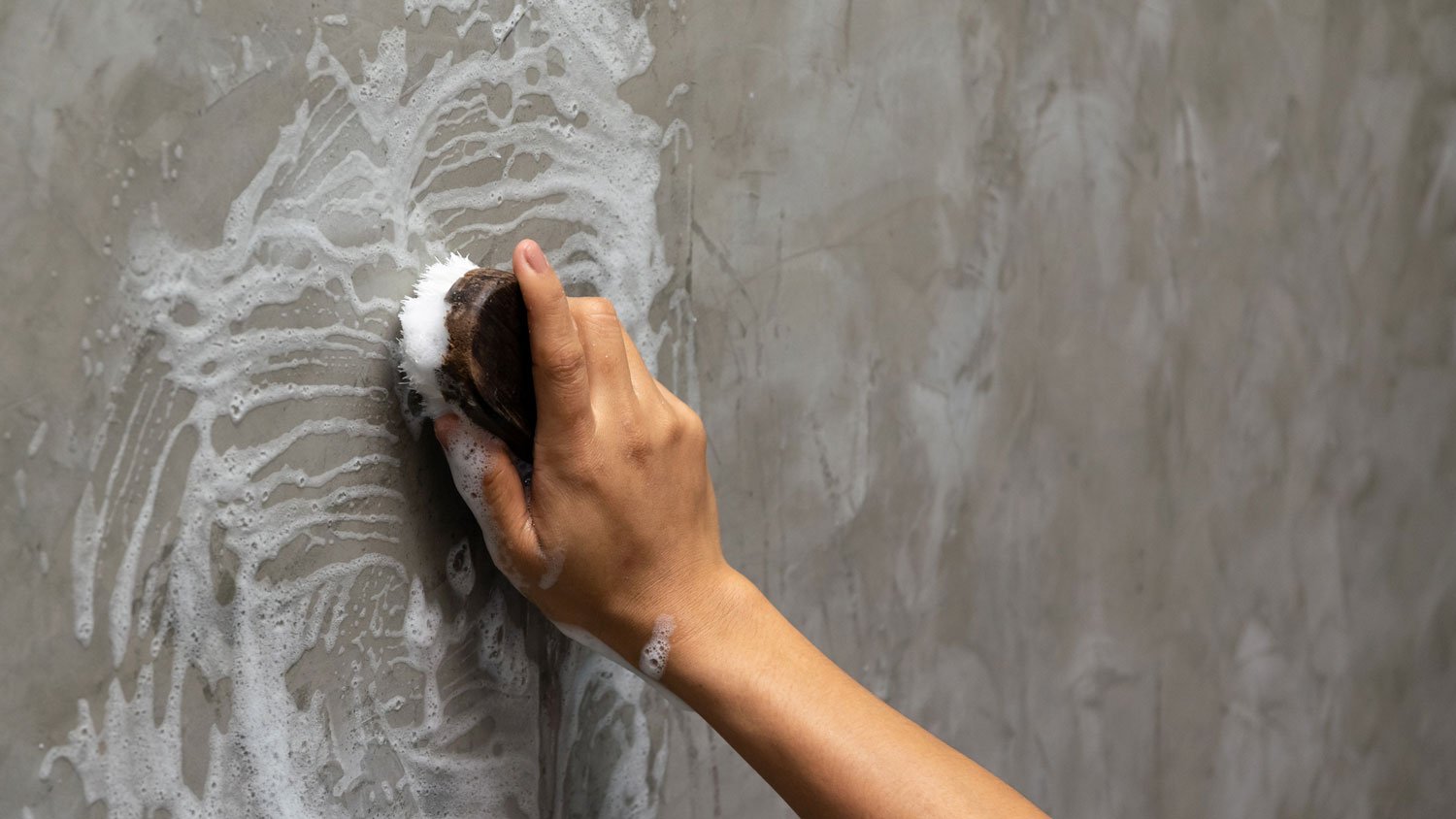
Clean walls are an important part of a well-kept house. Use this wall cleaning cost guide to see what it would cost to hire a professional to get the job done.
Get sparkling clean walls in no time flat


A clean home just feels better, doesn’t it? If your once-pristine teal accent wall has seen better days, from toddler hands to dust bunnies, it’s time to break out the cleaning supplies. If your wall is painted with flat paint, cleaning it isn’t as easy as it would be with an eggshell or glossy finish, but it can be done! Learn how to clean walls with flat paint to enhance your home’s appearance in seven quick steps.

Before getting your cleaning solution out and starting to work, there are a few things you should do.
Different finishes need different cleaning methods, so first confirm that you actually have flat paint on your walls before proceeding. If you painted the walls yourself, you probably know the finish used.
Shine a light at an angle on the wall toward you. If the wall simply lightens without a concentrated glow or visible light shape, it’s likely flat paint. If you see a concentrated glow but can’t make out the light source shape, it’s probably eggshell or satin finish. If you can clearly see the shape of the light source, your paint finish is likely glossy.
Before cleaning, lay down a plastic tarp under the wall sections you plan to clean—especially if you have carpet. This prevents drips and paint drops from damaging flooring and baseboards during cleaning or touch-ups

Before you begin cleaning your painted walls, make it easier on yourself by removing any wall art and rearranging your furniture. Doing this will open up the room and help you get into those hard-to-reach areas. It’s also a good idea to tape off any electrical outlets to prevent water or cleaning solutions from damaging them or creating a risk of electrical fire. Taping around the outlet covers or removing them entirely is helpful if you think you’ll need to touch up the paint around them.
Don’t start breaking out your cleaning solutions and sponges just yet. You still have another problem to tackle: dust and cobwebs. If you dampen the walls without removing debris, your walls will still look dirty after cleaning.
A vacuum cleaner with a light upholstery brush or a duster can remove dust particles and cobwebs. Start at the top of the wall and slowly work your way down.
Now that the dust and physical debris is off of your walls, you can move on to the actual cleaning process. Grab a bucket and fill it with warm water. Then, dip a sponge or soft microfiber cloth in it, and wring out the excess water. Next, clean your wall, starting from the top and working your way down.
If you’re happy with the results, no further action is required. But if the stains remain, it’s time to bring out the cleaning agents.

Before washing your flat paint wall, you’ll need to prep two buckets. One will have a dish soap solution, and the other will be used for rinsing.
To create a cleaning solution, add five to ten drops of liquid dish soap into one gallon of warm water.
Take your sponge and gently scrub your walls in a circular motion, once again starting from the top and working your way down.
If you want to be more organized, you can clean the walls in sections to ensure they get a thorough cleaning.
Don’t scrub too hard, though; when you’re cleaning eggshell paint walls or flat walls, you could lift the color if you scrub too heavily, creating an even bigger issue.
Once you’ve cleaned an area, rinse your sponge with warm water from your second bucket and wipe it down.
After a few rinses, the second bucket may start to get soapy. So make sure that you empty it and fill it with some clean water.
A simple soap solution is highly underrated. Dish soap and water can be used to clean anything from windows, countertops, mirrors, sinks, and walls. Depending on the brand, it may also act as a disinfectant.
You’re finally making some headway on your walls now that you’ve used dish soap to help with stains. But there might be some areas that need something a little stronger. In that case, you can create another cleaning solution using white vinegar and warm water.
Add one cup of white distilled vinegar to a bucket of warm water and mix well.
Starting at the top of the wall, work in small sections down to the bottom, applying the vinegar solution. No rinsing is needed afterward.
If stains or soot remain, mix ½ cup of baking soda into a bucket of warm water.Use this baking soda mixture to wash the stained areas thoroughly. The baking soda’s texture provides extra scrubbing power to remove deep stains and soot.

After all of your cleaning, there may still be a few stains that won’t come out no matter what you’ve tried. Scrubbing may have also left some scuff marks or removed some paint.
You can cover these blemishes with a small amount of touch-up paint. If you want to make sure the new color matches the existing finish, mix the paint thoroughly before applying and be sure to feather the edges.
Now that you know how to clean walls with flat paint, your next step is to ensure they stay clean longer. Since it’s harder to clean than other paint types, the goal is to make your next cleaning session less labor-intensive. Here are a few tips to keep your flat paint walls clean:
Place decor and furniture in front of your wall in high-traffic areas to protect it
Tackle scuff marks, dirt, and debris immediately
Change your air filters frequently to prevent dust buildup
The cost to clean walls using a professional service ranges between $170 and $480. These costs depend on the size of your walls and the amount of dirt built up over time. Cleaning flat-painted walls is a little more involved than cleaning walls with other finishes, but it’s a project that just about any homeowner can do with a little time and effort.
With that being said, we recommend hiring a house cleaner near you if you’re concerned about damaging your walls or if you have particularly heavy staining on the walls that you can’t get out, or cover up yourself. A house cleaner costs between $30 and $50 per hour, on average, but it could be worth it to avoid damaging your walls. It’s also a good idea to hire a professional to clean high ceilings if you don’t have the proper safety equipment.
Depending on the extent of the staining and soiling, you might also need to hire a local painting company to complete touch-ups after your cleaner does the bulk of the work.
From average costs to expert advice, get all the answers you need to get your job done.

Clean walls are an important part of a well-kept house. Use this wall cleaning cost guide to see what it would cost to hire a professional to get the job done.

Keeping your bathroom clean helps avoid stains, odors, and health risks. Learn how often you should clean your bathroom for best results.

Keeping your home clean is good for you and your house. Learn what deep cleaning is and how it differs from regular cleaning before you whip out the sponges.

When you cook onions, the smell can linger in your home for days afterward. Here’s a guide you can use to get rid of the onion smell in your home.

DIY cleaning solutions can be safe and reliable, not to mention cost effective. Use these tips for cleaning with vinegar and baking soda to reap the benefits.

Deep cleaning a house? Find out how long the process takes—plus tips to maintain a deep clean.